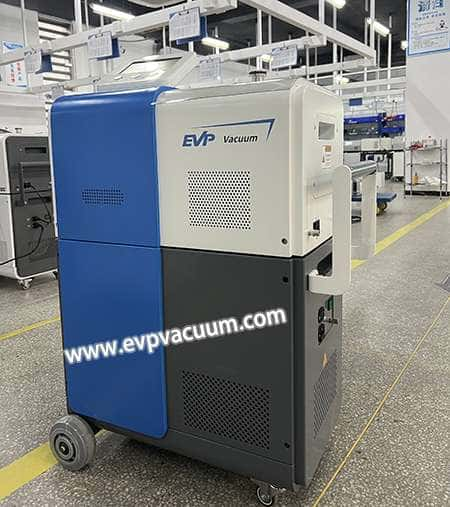High purity gas pipeline detection using helium mass spectrometer leak detector
In gas pipeline engineering, due to various factors during the construction process, some pipeline connection parts may have small loopholes that are difficult to observe with the naked eye. If used, it may cause leakage incidents and accidents. In gas pipeline engineering for transporting ultra-high purity electronic gases in microelectronics fields such as semiconductors and integrated circuits, once a leak occurs, it will have a serious impact on production safety, so leak detection is crucial. Let’s learn together how to use a helium mass spectrometer leak detector to test high-purity gas pipelines. The information provided is for reference only. If there are any omissions, please feel free to correct them and discuss further.
1. A brief introduction to helium mass spectrometer leak detector
The helium mass spectrometer leak detector, as a highly sensitive gas leak detection device, works based on the small molecular size and strong diffusivity of helium gas, as well as the high-precision analysis ability of mass spectrometry technology for gas composition.
2. Method for detecting high-purity gas pipelines using helium mass spectrometer leak detector
In high-purity gas pipeline inspection, the helium mass spectrometer leak detector evacuates the inside of the pipeline and then sprays helium gas outside the pipeline. If there is a leak, the helium gas will enter the inside of the pipeline and enter the leak detector. Once the leak detector detects helium gas, it indicates that there is a leak in the pipeline. Due to the extremely small size of helium molecules, they can penetrate into tiny cracks or loopholes, making this method particularly effective for detecting small leaks in high-purity gas pipelines.
The specific testing method steps are as follows:
1. Confirm that all valves and pressure regulating valves in the system are fully open.
2. Confirm that the pressure in the system is 0. If there is still positive pressure in the system, the gas in the system should be released first.
3. Slowly open the valve at the inlet of the leak detector and start pumping the system into a vacuum state. Follow the operating instructions of the leak detector until it reaches a detectable state.
4. Record the background helium leakage rate of the leak detector. Only when the background helium leakage rate is below 1 × 10-9 mbar. l/s, can injection work be carried out.
5. Starting from the weld bead or connection closest to the leak detector, spray helium gas onto the weld bead or connection with a spray gun so that the helium gas stays at the weld bead or connection for a period of time. After confirming that there is no leakage, proceed to the next weld bead or connection for testing until the last weld bead or connection.
6. If there is an increase in the indicator value of the leak detector, wait until the reading of the leak detector returns to normal and retest the weld bead or connection to confirm whether there is really a leak. If it is confirmed that there is no leak at the weld bead or connection, the previous welds or connections before the weld bead or connection should be checked sequentially until the leak point is found.

7. Until all contacts are detected, qualified contacts should be labeled with a qualified mark. After blowing helium gas through all contacts, continue to observe the reading of the leak detector for about 10 minutes to confirm that there are no abnormalities before separating the system from the instrument.
If the helium leakage rate of each contact is less than 1 × 10-9 mbar. l/s, it indicates that the leakage rate of the system meets the requirements. Testers can record the test results in the test report.
9. Separate the leak detector from the system.
It should be noted that when conducting high-purity gas pipeline inspections, it is important to ensure a clean and stable leak detection environment to avoid external factors affecting the inspection results. In addition, regular calibration and maintenance of leak detectors are also important measures to ensure detection accuracy and stability.
In summary, helium mass spectrometer leak detector plays an important role in the detection of high-purity gas pipelines. Its high precision and sensitivity make it impossible for small leaks to escape, providing strong guarantees for the safe operation of high-purity gas pipelines.
The above is a brief introduction to helium leak detection (helium detection) in high-purity gas pipeline engineering. Helium mass spectrometry detection is crucial for gas pipeline system engineering that transports gases. Thank you for reading, welcome everyone to communicate.
(The article comes from the Internet. If reprinting is not allowed, please contact our company to delete it.)

